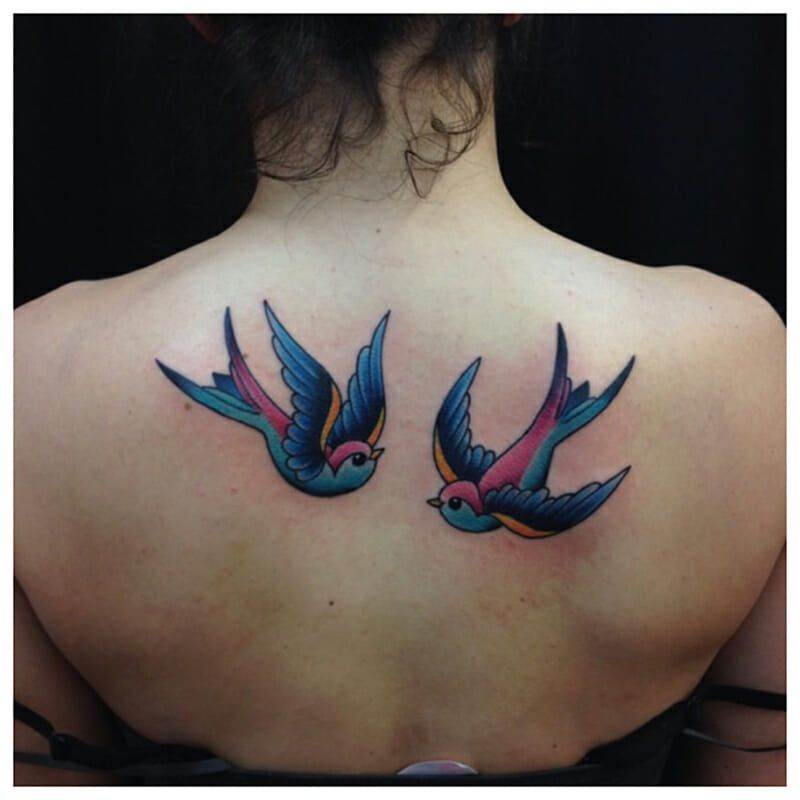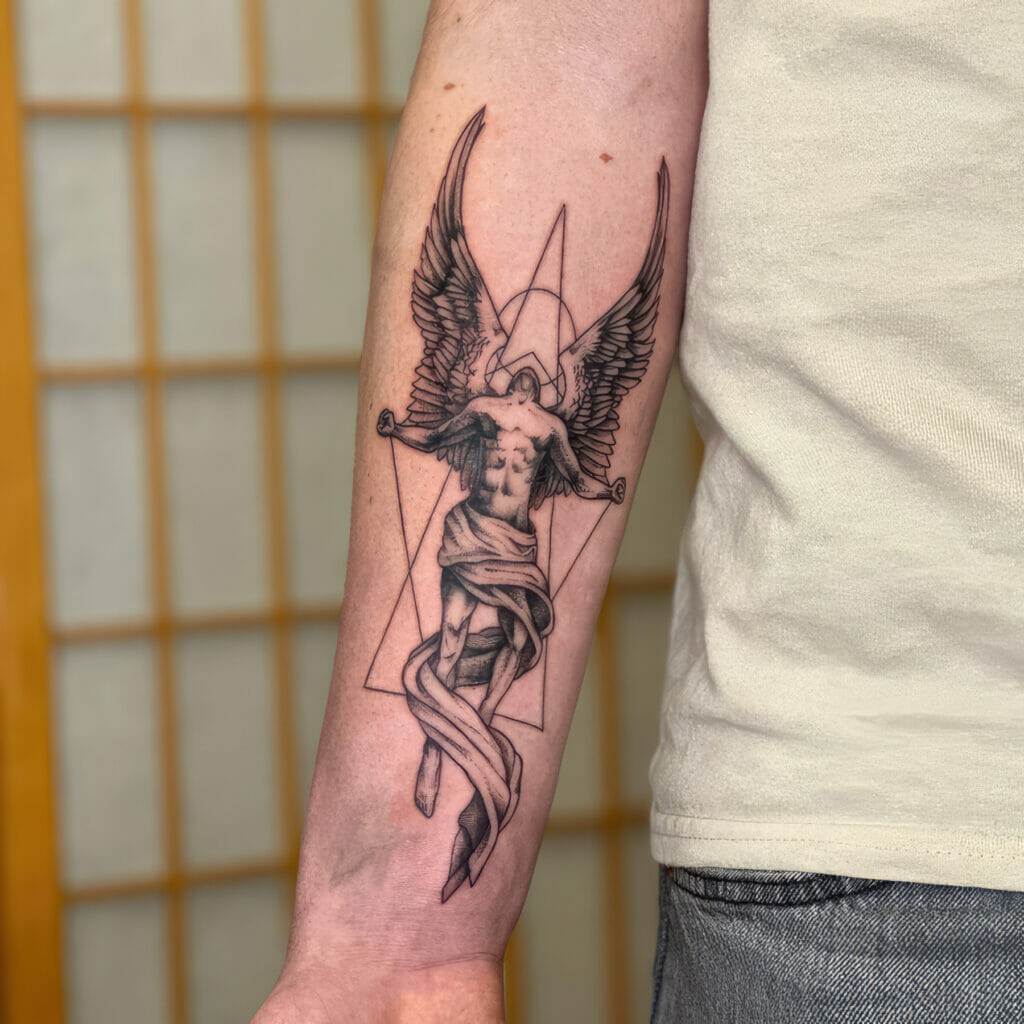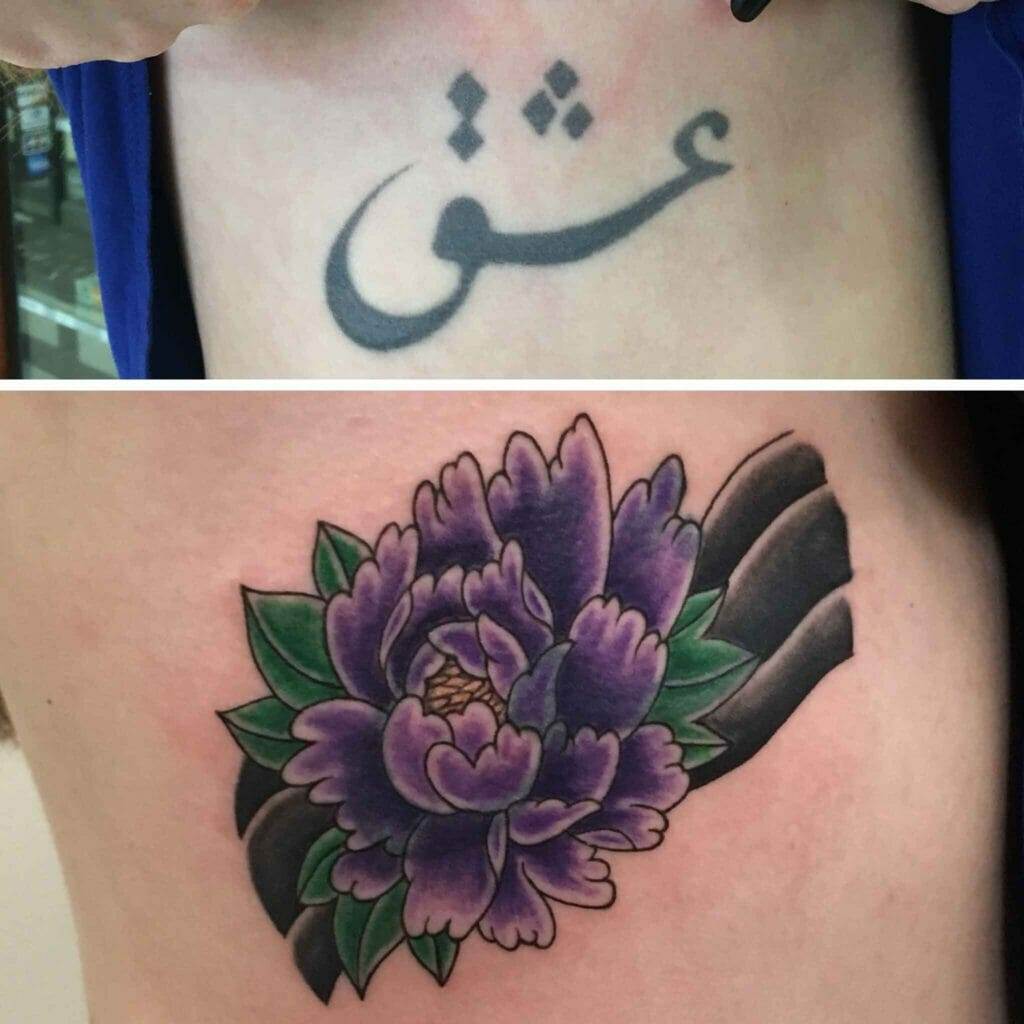Importance of Tattoo Preservation
Tattoos hold a special place in many people’s hearts, serving as expressions of identity, art, and personal journeys. Over time, however, the impact of aging on the appearance of tattoos can become a concern for those who wish to maintain their vibrancy. Tattoo preservation is not just a trend but a crucial aspect of prolonging the life of inked art. Here are a few reasons why preserving a tattoo’s appearance matters:
- Emotional Significance: Tattoos often represent meaningful experiences or commemorations. Keeping them looking fresh means maintaining the memories they encapsulate.
- Investment in Art: Quality tattoos are not just skin-deep; they are a financial investment too. Preserving their aesthetics helps safeguard that investment.
- Personal Aesthetics: Many people wish to feel confident and proud of their body art. Bright colors and clear lines can contribute to a positive self-image and expression.
Factors Affecting Tattoo Aging
Several factors can influence how tattoos age over time, including both environmental and personal choices. Understanding these factors can empower individuals to take better care of their body art:
- Skin Condition: Changes in skin quality due to aging, dryness, or elasticity issues can alter the appearance of tattoos. Hydrated skin tends to preserve tattoos better.
- Lifestyle Choices: Habits such as smoking or excessive alcohol consumption can also adversely affect the skin’s health, leading to accelerated tattoo fading.
- Sun Exposure: Ultraviolet rays can significantly degrade tattoo inks. Even with the best tattoos, prolonged sun exposure without protection can lead to premature aging.
- Aftercare Practices: Skipping proper tattoo aftercare following the process can lead to quicker fading and distortion of colors. Utilizing sunscreen and moisturizers can be pivotal.
- Ink Quality: Different ink types and techniques can affect how well a tattoo withstands the test of time. Professional shops typically use higher-quality inks that offer better longevity.
By considering these aspects, tattoo enthusiasts can make informed decisions, ensuring that their ink remains a point of pride for years to come. In the next sections, we will delve further into the tattoo aging process, offering insights and practical tips for keeping those cherished designs as vibrant as they once were.
Understanding Tattoo Aging Process
Skin Changes Over Time
As the body ages, the skin naturally undergoes a range of changes that can dramatically affect the appearance of tattoos. Understanding how these changes occur can empower individuals to better care for their body art.
- Loss of Elasticity: The skin loses collagen and elastin, leading to sagging and wrinkling. When the skin stretches or shrinks, it can distort tattoo designs. This is particularly noticeable with large or intricate tattoos.
- Thinning of the Epidermis: As the outer layer of the skin becomes thinner, it may cause the inks to appear less vibrant. Faded colors can diminish the overall impact of the tattoo.
- Dryness and Flakiness: Aging skin often becomes drier, leading to flaking. If the skin around a tattoo doesn’t remain moisturized, this can cause an uneven surface and affect the tattoo’s appearance over time.
- Development of Age Spots: Aging often brings about pigmentation changes. Age spots can develop around tattoos, which may alter the vividness of the tattoo colors.
Recognizing these skin changes can help tattoo owners take action to counteract their effects—keeping skin well-hydrated and using quality skincare products can make a significant difference.
Impact of Sun Exposure
Sun exposure is one of the leading factors in how tattoos age, specifically in how they fade and lose their detail.
- UV Radiation: The sun emits ultraviolet (UV) rays, which can break down the pigments in tattoo inks. Prolonged exposure without protection can lead to significant fading.
- Skin Burns: Over time, the sun can cause sunburns, which can damage not only the skin but also the tattoo beneath. This damage may lead to scars that affect how the tattoo looks.
- Preventive Measures: To mitigate the effects of sun exposure, it’s essential to adopt a proactive approach:
- Always apply a broad-spectrum sunscreen with at least SPF 30 on the tattooed areas when exposed to sunlight.
- Consider wearing protective clothing, like long sleeves or UV-protective fabrics, during extended outdoor activities.
- Seek shade whenever possible, especially during peak sun hours.
By understanding the tattoos’ aging process—specifically how skin changes and environmental factors like sun exposure play crucial roles—tattoo enthusiasts can better preserve their body art. In the following sections, we will explore practical tips for preserving tattoo appearance and maintaining long-lasting beauty.
Tips for Preserving Tattoo Appearance
Proper Skincare Routine
Maintaining a proper skincare routine is crucial for preserving the beauty and longevity of tattoos. The condition of the skin directly impacts how vibrant and clear tattoos look over time. Here are essential tips for an effective skincare regimen:
- Hydration: Keeping the skin moisturized is fundamental. Use a quality lotion or cream to maintain skin elasticity and hydration. Look for products with nourishing ingredients like aloe vera, shea butter, or vitamin E.
- Gentle Cleansing: When washing tattooed areas, opt for mild, fragrance-free cleansers. Harsh soaps can strip the skin of its natural oils, leading to dryness and irritation.
- Regular Exfoliation: Exfoliating helps remove dead skin cells, allowing for a smoother appearance of the tattoo. However, it’s essential to choose a gentle exfoliating scrub and limit this practice to once a week to prevent irritation.
- Use Sunscreen: Applying a broad-spectrum sunscreen with SPF 30 or higher is non-negotiable for protecting tattoos from sun damage. Reapply every two hours when outdoors, especially after swimming or sweating.
Incorporating these steps into a daily routine will not only promote healthy skin but also keep tattoos looking fresh and vivid.
Avoiding Certain Activities
While maintaining a proper skincare routine is vital, avoiding certain activities can dramatically affect tattoo longevity. Awareness of these potential pitfalls can help tattoo lovers take better care of their ink:
- Sunbathing: Excessive sun exposure, especially during peak hours, can lead to fading. For those who enjoy sunbathing, consider protecting tattooed areas with a towel or applying sunscreen generously.
- Hot Showers and Baths: Hot water can strip moisture from the skin, leading to dryness and potential fading of the tattoo. Opt for lukewarm water and keep showers shorter to preserve skin health.
- Swimming in Chlorinated Pools: Chlorine can be harsh on both skin and tattoos. If swimming is on the agenda, consider using a protective barrier cream on the tattooed area, or limit the time spent in chlorinated water.
- Intense Workouts: Sweat itself isn’t directly damaging, but prolonged exposure can lead to irritation or dryness. Always cleanse and moisturize after a workout to keep skin healthy.
By following these tips for a diligent skincare routine and avoiding certain activities, individuals can significantly enhance the appearance and longevity of their tattoos. In the next section, we will discuss how choosing the right tattoo placement can play a vital role in preserving its beauty.
Choosing Tattoo Placement Wisely
Consideration of Skin Changes
When it comes to tattoos, placement is just as crucial as the design itself. As skin undergoes changes over time, the choice of where to ink can significantly affect how well a tattoo retains its vibrancy and clarity. Understanding how certain areas of the body age can help in making informed placement decisions:
- Skin Elasticity: Areas such as the abdomen, inner arms, and thighs tend to be more prone to stretching or sagging, particularly with significant weight fluctuations or pregnancy. Consider these changes when selecting larger tattoos.
- Sun-Exposed Areas: Parts of the body that receive more sun exposure—like the shoulders, back of the hands, and forearms—are more likely to fade. Therefore, it’s wise to consider ink placement in less sun-exposed locations if long-term vibrancy is a priority.
- Skin Thickness: The thickness of the skin varies across different body parts. Thinner areas, like the wrists and ankles, may not hold ink as well as thicker areas, leading to quicker fading.
By considering these skin changes, individuals can choose placements that not only complement their aesthetic but also ensure the tattoos’ longevity.
Optimal Areas for Longevity
Certain body areas tend to better preserve tattoos over time due to various factors, including skin type, exposure, and movement. Here are some optimal areas for tattoo placement:
- Upper Arm and Shoulder: These areas usually have more muscle and thicker skin, making them ideal for tattoos. They are often less exposed to sunlight, helping keep the ink vibrant.
- Back and Chest: The flat surface area of the back and chest provides ample space for larger designs, reducing the chance of distortion. These areas are also less prone to constant movement, preserving the tattoo’s integrity.
- Calves: Similar to the upper arms, the calves possess thicker skin and less sun exposure, making them great locations for tattoos that last.
- Thighs and Sides: These locations have ample skin and muscle, which tend to withstand changes from aging or weight fluctuations. They can also accommodate larger pieces while minimizing distortion.
By understanding the implications of skin changes and choosing optimal tattoo placement, enthusiasts can ensure their body art maintains its beauty for years to come. Next, we will address the importance of touch-ups and maintenance to keep tattoos looking fresh and vibrant.
Importance of Touch-Ups and Maintenance

Frequency of Touch-Ups
Maintaining the vibrancy and clarity of tattoos is an ongoing journey that requires occasional touch-ups and maintenance. Just like any art piece, tattoos may need refreshing over time to keep them looking their best. The frequency of touch-ups depends on several factors, including skin type, ink quality, and placement.
- General Guidelines: On average, most tattoos may require a touch-up every 3 to 5 years. However, this can vary based on individual circumstances and lifestyle.
- Faded Colors: If you notice that certain colors have significantly faded or lines have blurred, it may be time for a touch-up. Pay attention to the areas that receive more sun exposure, as these tend to fade faster.
- Aging Factors: As the skin ages, its texture and elasticity change, which can affect the appearance of tattoos. Regular touch-ups can help address such issues, enhancing the tattoo’s clarity and vibrancy.
- Personal Routine: Keeping an eye on your tattoo during skincare routines will help identify when touch-ups are needed. This proactive approach ensures your tattoo remains a point of pride.
Professional Consultation
Consulting with a professional tattoo artist is a crucial step in maintaining the beauty and longevity of tattoos. They can provide tailored advice based on specific tattoos and individual skin types.
- Expert Evaluation: Getting a professional assessment is essential for understanding the current state of your tattoo. An artist may point out areas needing refreshment that you might not have noticed.
- Customized Care Recommendations: Professional artists can suggest personalized care routines and aftercare based on your unique tattoo and skin type, ensuring better longevity of the ink.
- Finding the Right Time: Artists can help determine the best time for touch-ups based on factors such as fading, the condition of your skin, and how well the tattoo has healed since its initial application.
Prioritizing professional consultation ensures that your tattoo remains a vibrant and cherished part of your identity. In the next section, we will discuss embracing the natural aging of tattoos, highlighting strategies to appreciate their evolution over time.
Embracing Natural Aging of Tattoos

Appreciating Evolution of Tattoos
As tattoos age, they evolve—much like the wear and tear of life experiences. Embracing the natural aging of tattoos can be a beautiful journey of self-reflection and acceptance. Instead of viewing fading as a flaw, it can be seen as a testament to personal growth and the passage of time.
- Tattoo Stories: Each tattoo tells a story, and with time, it often adds layers of meaning. A faded design can remind individuals of the memories, emotions, and milestones associated with that piece of art.
- Changes in Perspective: Appreciating the evolution of tattoos encourages a shift in perspective. Rather than focusing solely on maintaining perfect ink, individuals can celebrate the stories that come with each mark—much like a cherished photograph that signifies a moment in time.
- Cultural Shift: More people are beginning to embrace the unique characteristics of aging tattoos, recognizing that they can reflect a life well-lived. This cultural shift celebrates imperfections and embraces authenticity, allowing individuals to proudly display their evolving artwork.

Strategies for Enhancing Faded Tattoos
While it’s essential to appreciate the aging process, there are also effective strategies for enhancing faded tattoos to ensure they continue to look their best:
- Reworking the Tattoo: One compelling option is to rework or add to the original design. This can involve creating additional elements around the faded tattoo, effectively blending the old with the new. By collaborating with a skilled tattoo artist, individuals can breathe new life into their body art.
- Color Boost: A touch-up with fresh ink can restore vibrancy. Many artists can carefully reapply colors to faded areas, reviving the tattoo’s original beauty without altering the entire piece.
- Tattoo Cover-Ups: In cases where fading significantly impacts a tattoo’s integrity, artists can suggest creative cover-up designs. These can transform the faded ink into a new piece of art altogether, allowing for a fresh start while still respecting the original design.
- Skincare Maintenance: Continued commitment to proper skincare routines, like regular moisturizing and sun protection, can also help keep tattoos looking their best for longer.
By embracing the natural aging of tattoos and employing strategies to enhance their appearance, tattoo enthusiasts can cultivate a deeper connection to their body art. This journey is both a celebration of the past and an acknowledgment of the present, allowing individuals to wear their tattoos proudly for years to come.
